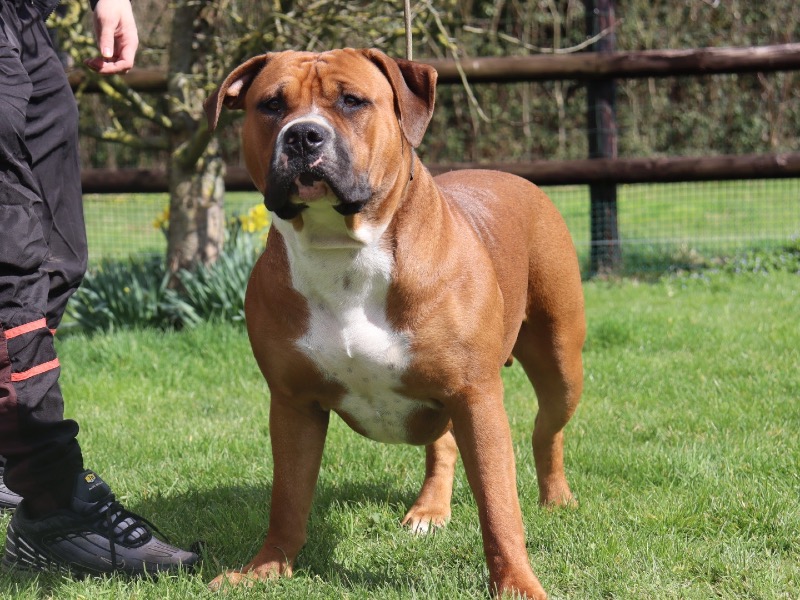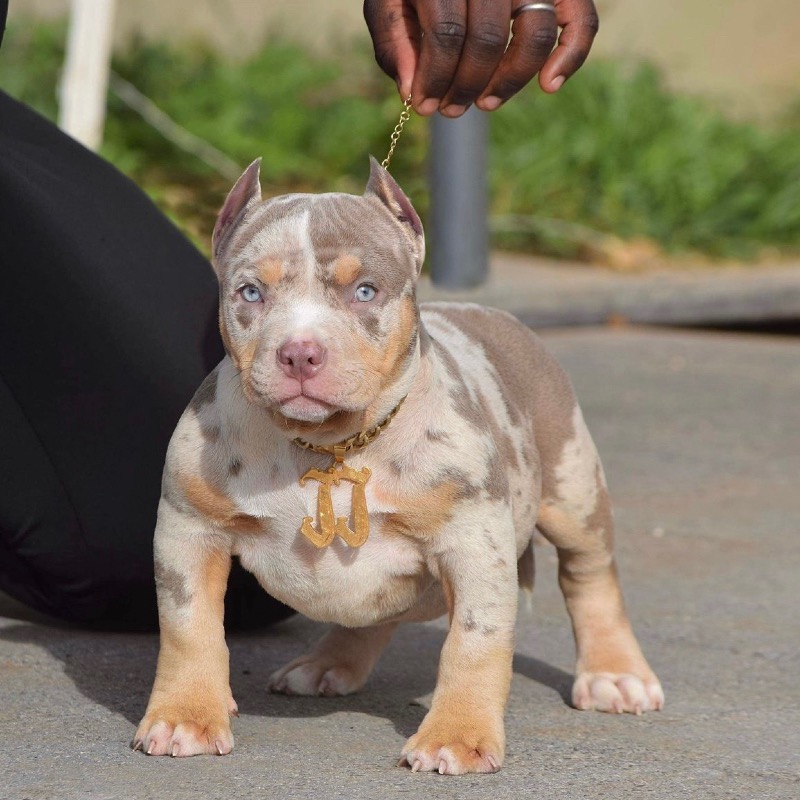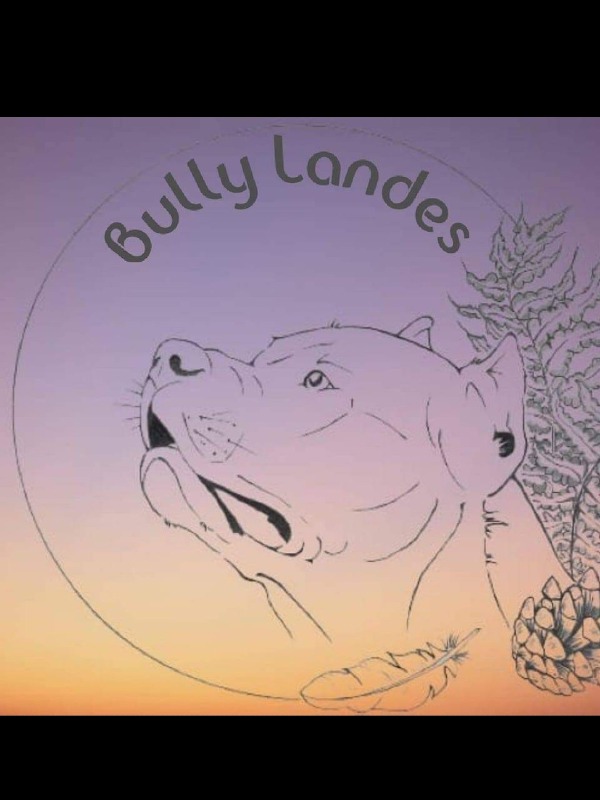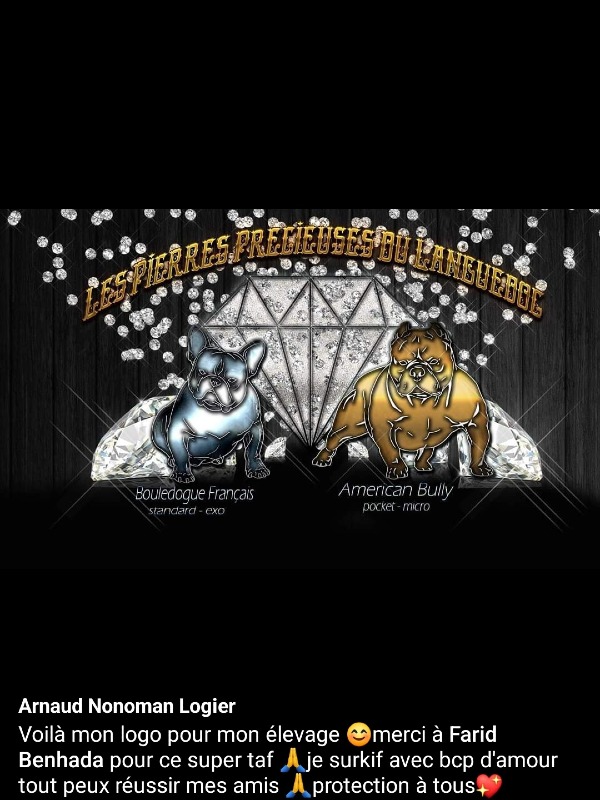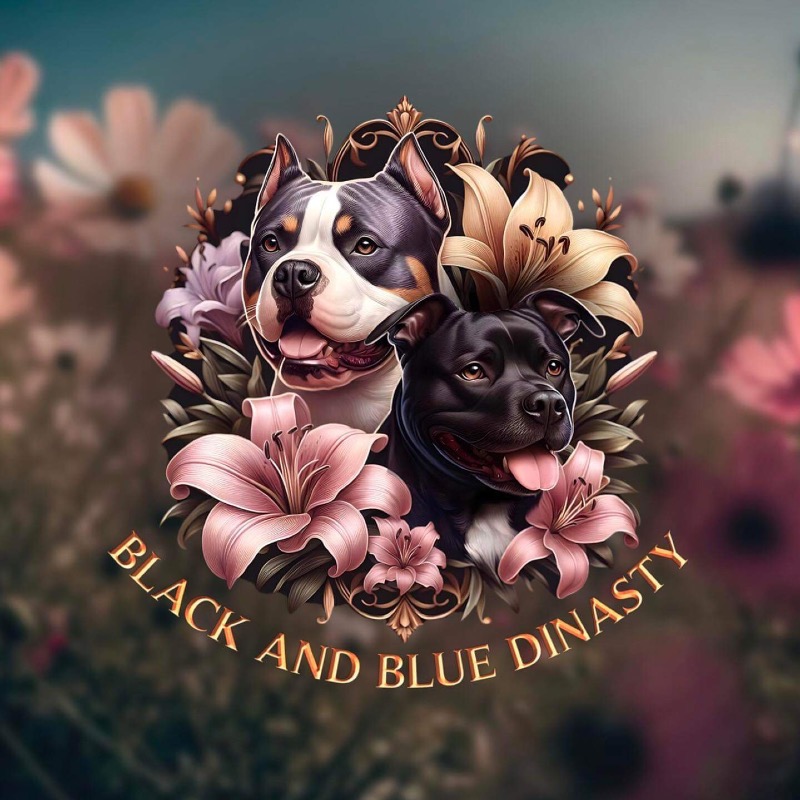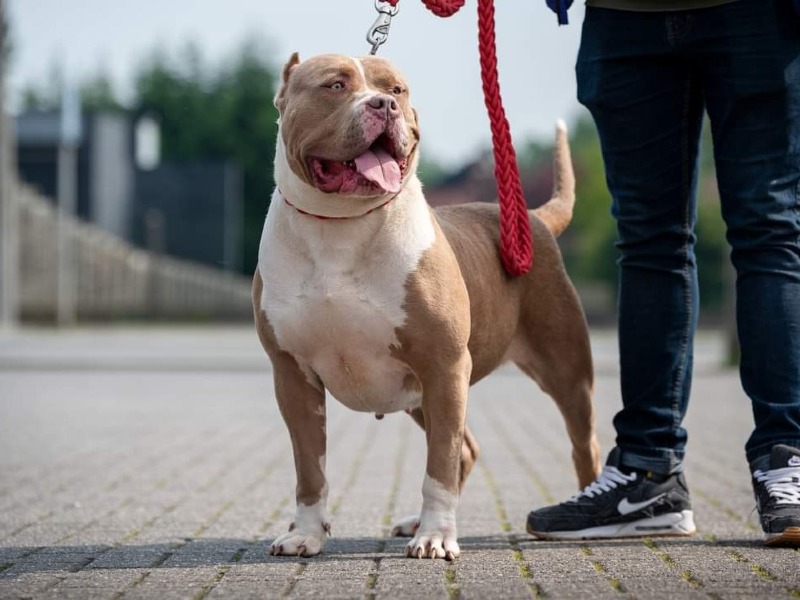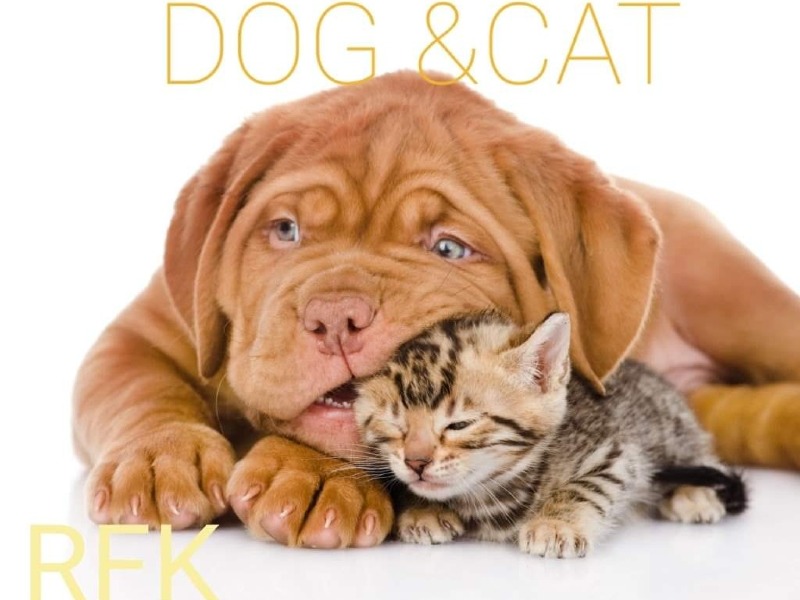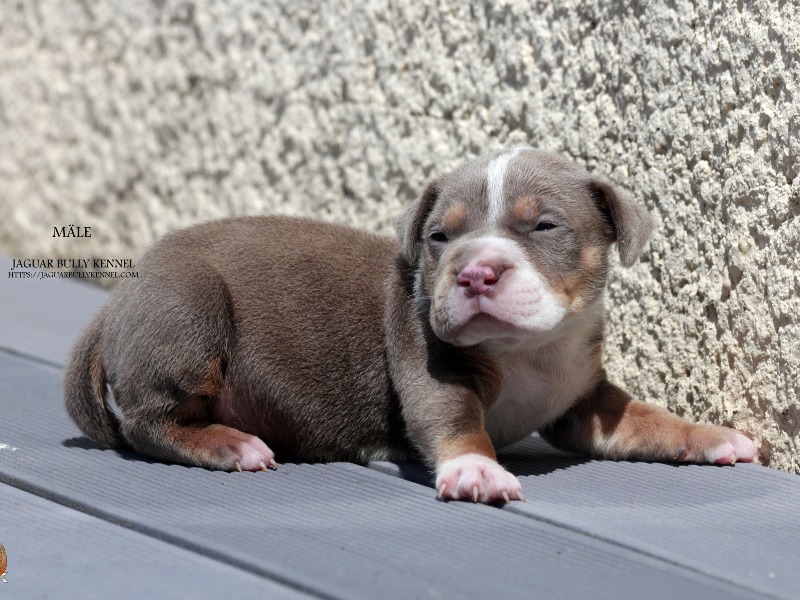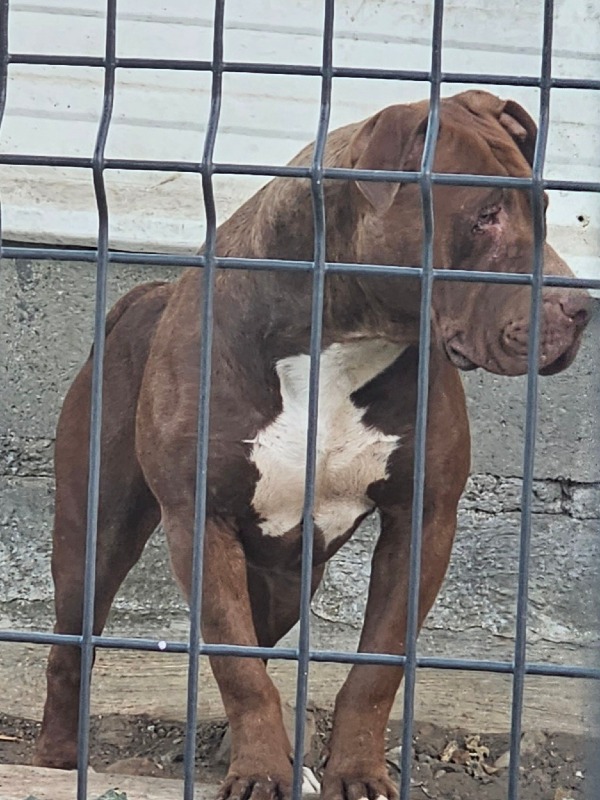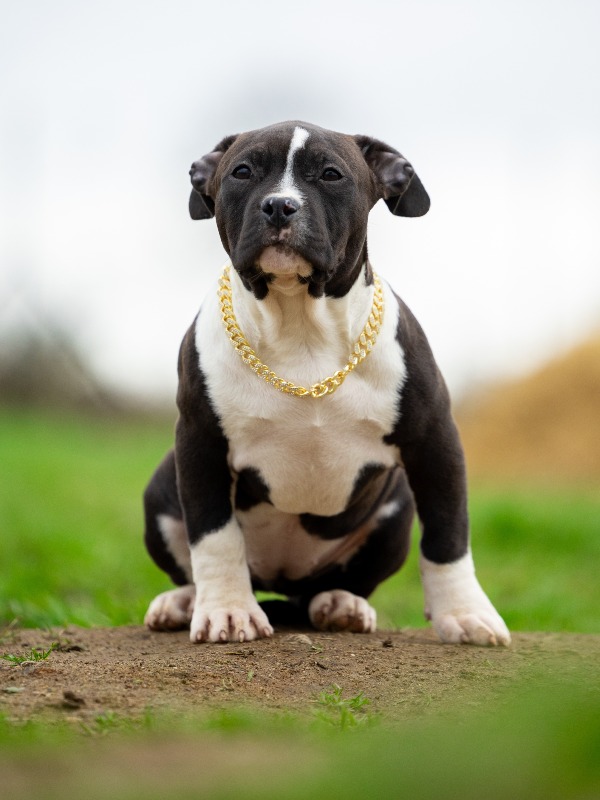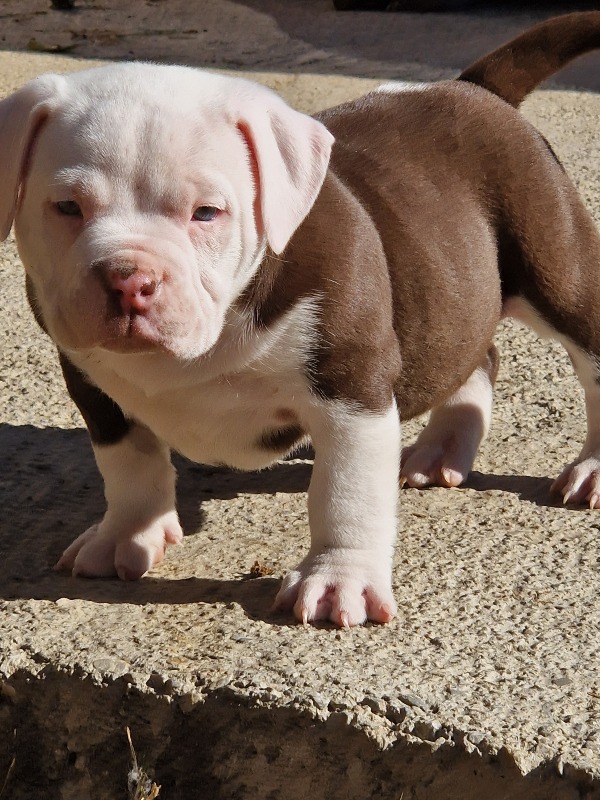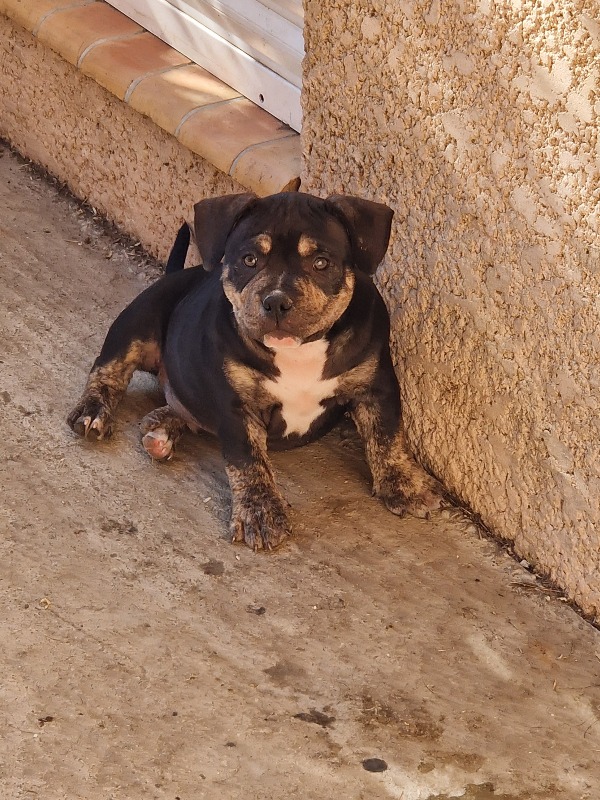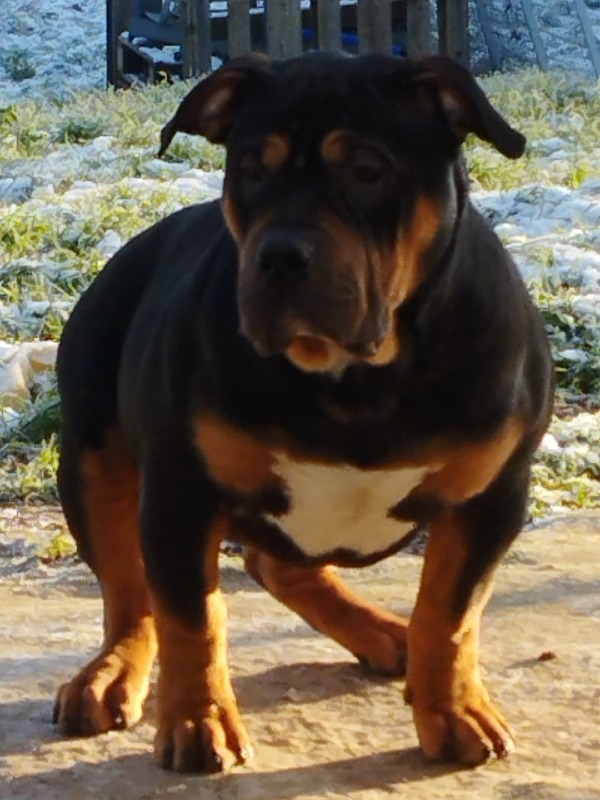American bully
Welcome to our page dedicated to the breed of dog american bully!
Here, you will find all the useful information about american bully. This descriptive profile will allow you to discover the aspects of this breed. You can notably consult information about the average price, monthly and annual upkeep expenses, their health, name ideas, as well as their official recognition by competent authorities.
Explore this page to discover everything you need to know.
Overall description of the breed
The American Bully is a young breed, created in the 1990s in the United States, which has experienced a spectacular development in recent years. The foundations were not laid by one man with a specific goal, but rather by a trend of several breeders, mainly located in Virginia and South Carolina. These muggle enthusiasts, especially American Staffordshire and American Pit Bull Terriers, decided to travel the United States to select the best and biggest dogs to start their breeding work.
This multiplicity of programmes led some of them to carry out "re-breeding" phenomena such as the addition of other bull or bulldog type breeds such as the American Bulldog, the English Bulldog, the Old English Bulldog, etc. for the Pocket or Standard category, as well as probably other breeds of dogs such as the Cane Corso or Saint Bernard for the XL version.
Following this effervescence, a breeder at the origin of the Razor Edge movement, Mr. Dave Wilson, took the initiative to define a precise standard, by establishing physical codes and clear rules. The majority of breeders followed him in his breeding program. Following this, he created his own registry: the ABKC - American Bully Kennel Club, so we can consider that the original and majority club of the American Bully breed as we know it today is the ABKC, open since 2004 and recognised by the UKC (United Kennel Club) since 2013. The American Bully is not recognised by the International Kennel Federation.
The primary objective was to create a breed that was less temperamental and dynamic than the American Pitbull Terrier, but more massive. There are four categories officially recognised by the ABKC, the Pocket, the Classic, the Standard and the XL, all with different measurements, but the morphological standards remain more or less the same. Other varieties have been created, like the Micro or the XXL, created by breeders wishing to go beyond the standard, they are not recognised by the ABKC club, however other associations register them like the IBR or the IBKC.
The morphology of the American Bully is characterized by a strong and robust bone structure, a dense dog with a wide and deep chest reminiscent of a barrel, held together by stocky shoulders. A large, broad, muscular head with pronounced jaws, rounder than an American Staffordshire Terrier, Staffordshire Bull Terrier or any dog in its class, a pronounced stop, and a broad, strong neck. An American Bully should give an impression of power, and should be recognizable at first glance.
His coat is short, close and soft, all colours are allowed, single, multi-coloured or parti-coloured coat, white, black, blue nose and red nose, however, spotted or merle coats are not encouraged.
As for his character, he is an extraordinary companion dog, totally devoted to his master and family members. A gentle temperament with children and protective of those who share his home, however, his sociability makes him unsuspecting of strangers, so he does not excel as a guard dog. Sporty, but not overly so, he is not a fan of long walks lasting several hours, preferring short walks and playful moments with his family.
They are sociable with other dogs and animals, and a flexible and balanced character is a fundamental part of the breed standard. The American Bully is a jovial, trustworthy dog that is particularly attached to its social group, and we are sure that it will make many owners happy in the future!
The different categories are defined as follows
Pocket: 33 to 42 cm (12" to 16")
Male 35 to 42 cm
Female 33 to 39 cm
Classic: 40 to 51 cm (12" to 16")
Male 42 to 51 cm
Female 40 to 48 cm
Standard: 40 and 51 cm (15" to 20")
Male 42 to 51 cm
Female 40 to 48 cm
XL: 48 to 57 cm (18" to 22")
Male 51 to 57 cm
Female 48 to 55 cm
Categories not recognized by the ABKC :
Micro :
Less than 35 cm for males
Less than 33 cm for females
XXL :
Over 57 cm for males
Over 55 cm for females
Its weight, depending on the category, can vary from 15 kg to over 65 kg.
Awareness of acquiring an animal
Each animal is a sensitive being, deserving love, attention and care.
When you choose to adopt an animal, you take on the responsibility of ensuring its health and well-being throughout its life.
To learn more about animal welfare, we invite you to consult our FAQ by clicking the button below:
Origins
The American Bully is a relatively recent breed that originated in the United States in the 1980s and 1990s. It is the result of crossings between several breeds, including the American Pit Bull Terrier, the American Staffordshire Terrier, and other bulldog breeds. The goal of these crossings was to create a dog that combines strength and power with a gentle and sociable temperament. The result is a sturdy dog with an impressive appearance, but a friendly and loyal character. Breeders have focused on developing a breed with a muscular physique and a compact stature, while maintaining a devoted and affectionate nature towards humans.
History
The American Bully was developed in the United States in the 1980s and 1990s, from several terrier and bulldog breeds. Initially, the goal was to create a perfect family dog, with an imposing appearance but a gentle and sociable temperament. Breeders selected specimens of the American Pit Bull Terrier and American Staffordshire Terrier, as well as other bulldogs, to obtain a powerful, muscular, and stable dog. In 2004, the breed was officially recognized by the American Bully Kennel Club (ABKC), which established specific standards for this breed. Since then, the American Bully has gained popularity worldwide, appreciated for its impressive physique and affectionate nature.
Standard
The American Bully standard, as defined by the American Bully Kennel Club (ABKC), describes a muscular and imposing dog, with a compact build. The head is wide and well-defined, with pronounced cheeks and cropped or uncropped ears. The eyes are medium-sized, oval, and well-spaced. The muzzle is square and short, with well-opened nostrils. The body is sturdy, with a wide and deep chest, muscular shoulders, and a short and powerful back. The legs are straight and well-muscled. The coat is short, smooth, and shiny, with a variety of colors, including black, white, blue, fawn, red, and all possible variations. The American Bully comes in several size categories, including standard, pocket, XL, and classic.
Physical characteristics
The American Bully is a muscular, well-proportioned dog with an imposing appearance and a sturdy physique. Depending on the variety, the size can vary: standard American Bullies measure between 43 and 51 cm at the withers, while "pocket" versions are smaller, measuring between 35 and 43 cm. XL varieties exceed 51 cm. The weight also varies, ranging from 30 to 50 kg, or more for larger specimens. The coat is short, smooth, and shiny, easy to maintain. Colors can be very diverse, including black, white, blue, fawn, red, and all their shades. Their body is compact, with a wide and deep chest, muscular shoulders, and a short back. Their head is broad, with a square muzzle and pronounced cheeks.
Character
The American Bully is known for its gentle and sociable nature, despite its imposing appearance. This dog is extremely loyal and protective towards its family, but also very friendly and patient, especially with children. It has a balanced and stable temperament, making it an excellent companion dog. The American Bully is intelligent, which makes training and education easier. It enjoys pleasing its owner and is very receptive to positive reinforcement methods. While it may be wary of strangers, it is not aggressive by nature and generally gets along well with other animals, especially if socialized from a young age.
Life expectancy
The life expectancy of the American Bully is generally between 10 and 12 years, although some individuals can live longer with proper care. This longevity depends on several factors, including a balanced diet, regular exercise, and consistent veterinary care. Owners should ensure to closely monitor their dog's health, especially regarding common health issues in this breed, such as hip dysplasia and heart disease. Regular check-ups at the vet and attention to hygiene and nutrition can greatly contribute to a long and healthy life for these sturdy and affectionate dogs.
Exercise and activity needs
The American Bully is an active dog that requires a moderate amount of exercise to stay healthy and happy. On average, one to two hours of physical activity per day is recommended. This can include walks, play sessions in a secure yard, and interactive activities like fetch. Bullies also enjoy tug-of-war games and chew-resistant toys. While they enjoy physical activities, they are also known to be quite adaptable and can adjust to quieter living environments, as long as they receive enough mental and physical stimulation. Regular activity helps prevent obesity and maintains their developed musculature.
Recommended diet
The diet of the American Bully must be balanced and rich in proteins to support its robust musculature. A quality diet, composed of premium kibbles specially formulated for active breeds, is recommended. Caloric needs vary depending on the size, activity level, and age of the dog. In general, an adult American Bully consumes between 250 and 450 grams of dry food per day, divided into two meals. The monthly cost of food ranges between 50 and 100 euros, depending on the quality of the products chosen. Supplements, such as omega-3 fatty acids, can be added to promote skin and joint health. It is crucial to monitor their weight to avoid obesity.
Training and obedience
The American Bully is an intelligent and eager to please dog, which makes training and obedience easy. However, it is important to start training from a young age to instill good habits and proper socialization. Using positive reinforcement methods, such as rewards and praise, is particularly effective with this breed. Consistency and patience are essential, as although they are responsive, some Bullies can be a bit stubborn. Basic commands like "sit", "come", "heel" and "stay" should be taught from the beginning. Early socialization with other dogs and varied environments will help prevent undesirable behaviors and develop a well-balanced dog.
Behavior with children
The American Bully is often considered an excellent family dog, especially with children. Its gentle, patient, and protective temperament makes it an ideal companion for young children. Bullies are known for their tolerance and affection towards family members, and they often take their role as protector very seriously. However, due to their strength and energy, it is important to monitor interactions with very young children to avoid unintentional accidents. Teaching children to respect and treat their dog well is also crucial for a harmonious coexistence. With proper socialization and education, the American Bully can be a loyal and affectionate companion for the whole family.
Compatibility with Other Animals
The American Bully can harmoniously coexist with other pets, especially if properly socialized from a young age. Its friendly and balanced temperament generally allows it to get along well with other dogs and even cats. However, each dog is unique, so it is important to supervise initial interactions and introduce new animals in a progressive and controlled manner. Some Bullies may exhibit territorial or guarding instincts, but with proper socialization and appropriate training, these behaviors can be effectively managed. It is essential to reinforce positive interactions and promote a respectful living environment for all animals in the household.
Grooming needs
The American Bully has a short and smooth coat that requires relatively little grooming. A weekly brushing is sufficient to remove dead hair and keep the coat shiny. Baths are only necessary occasionally, or when the dog is particularly dirty. It is important to regularly check the ears to prevent infections and clean the teeth to prevent dental diseases. Nails should be trimmed regularly to prevent them from becoming too long and causing discomfort or injury. Maintaining these simple but essential grooming routines contributes to the overall health and well-being of the American Bully, while strengthening the bond between the dog and its owner.
Health
The American Bully is generally a healthy dog, but like all breeds, it can be prone to certain health problems. Common conditions include hip dysplasia, heart disease, and skin allergies. Respiratory problems can also occur, especially in specimens with a very short muzzle. It is crucial to choose a reputable breeder who tests their dogs for these conditions to minimize risks. A balanced diet, regular exercise, and periodic veterinary visits are essential to maintain their health. Parasite prevention, vaccination, and regular dental health checks also contribute to their overall well-being.
Average price
The price of an American Bully can vary considerably depending on the lineage, pedigree, breeder's reputation, and the quality of the puppy. Generally, American Bully puppies cost between 1,500 and 4,000 euros. Top-quality specimens from champion lines can cost much more, sometimes up to 10,000 euros or more. It is essential to choose a reputable breeder who follows health and animal welfare standards. Although this may mean paying a higher price, it often guarantees a healthy and well-socialized puppy. Future owners should also budget for additional expenses for veterinary care, food, supplies, and training.
Expenses
Monthly expenses for an American Bully can vary depending on several factors, including food, veterinary care, grooming, and accessories. On average, owners can expect to spend between 70 and 150 euros per month. Quality, protein-rich food costs around 40 to 70 euros per month. Regular veterinary care, including vaccinations and parasite treatments, can add 10 to 30 euros per month on average. Grooming, although minimal, can cost 20 to 40 euros per month if done by a professional. Toys, treats, and other accessories can add an additional 10 to 20 euros. These costs may vary depending on each dog's specific needs and the owner's choices.
Name ideas
Choosing a name for your American Bully can be a fun and exciting task. Here are some name suggestions that may suit the personality and appearance of this impressive breed: Titan, Bella, Rex, Luna, Max, Duke, Maya, Rocky, Zara, Thor, Ruby, Diesel, Nala, Bruno, Athena. When choosing a name, it is important to consider its pronunciation and ensure that it does not sound too similar to basic commands to avoid confusion during training. Take the time to observe your dog and choose a name that reflects its unique personality and majestic appearance.
Legislation and regulation
In France, the American Bully is not considered a dangerous dog breed and therefore is not part of the categories of dogs subject to specific restrictions, unlike the American Pit Bull Terrier or other similar breeds. However, it is essential to comply with general regulations regarding dog ownership, such as identification by microchip or tattoo, and up-to-date vaccination. Owners must also take out liability insurance to cover any potential damage caused by their dog. When traveling abroad, it is crucial to check the specific requirements of the destination country regarding health certificates and vaccinations. Always inquire about local laws to avoid any legal issues.
Official recognition
The American Bully is recognized by several cynological organizations around the world. In France, the Société Centrale Canine (SCC) recognizes the breed under certain conditions. The American Bully Kennel Club (ABKC) in the United States is the main organization that has established the breed standards and organizes specific dog shows for American Bully. Other organizations, such as the United Kennel Club (UKC) and the Fédération Cynologique Internationale (FCI), also recognize this breed. These organizations define the breed standards and oversee competitions and shows, thereby contributing to the promotion and preservation of the American Bully on a global scale.
Pedigrees
Pedigrees for American Bully are issued by several recognized breed clubs around the world. In France, the Société Centrale Canine (SCC) can provide pedigrees for registered dogs. In the United States, the American Bully Kennel Club (ABKC) is the main organization issuing pedigrees for this breed. Other clubs such as the United Kennel Club (UKC) and the International Bully Coalition (IBC) also offer pedigrees for American Bully. In England, the Kennel Club (KC) is starting to recognize this breed. These clubs ensure the purity of the bloodlines and adherence to breed standards, ensuring the quality and compliance of the American Bully registered in their records.
Destination and usage
The American Bully is first and foremost an exceptional companion dog, appreciated for its balanced temperament, loyalty, and affection towards its owners. Due to its imposing physique and protective nature, it is also a good guard dog. Although it is not traditionally used for specific work tasks, it excels in conformation competitions and canine sports such as agility, rally obedience, and weight pulling. Its social and adaptable nature makes it an excellent companion for families, and it is also used in animal therapy roles, bringing comfort and joy to people in hospitals and retirement homes.
Prohibitions
In France, the American Bully is not among the breeds of dogs considered dangerous and therefore is not subject to specific prohibitions, unlike some categorized breeds. However, it is essential to comply with general regulations regarding dog ownership, especially in terms of identification, vaccination, and compliance with local laws regarding dogs in public. In other countries, regulations may vary. For example, some regions may impose restrictions on the possession of bull-type breeds or specific requirements for owners. It is crucial to inquire about local and national laws, especially when traveling or moving, to avoid any violations.
Breeders ofAmerican bully
Want to see more breeders ofAmerican bully?
Check out the page of our directory listing all breeders ofAmerican bullyClassified Ads ofAmerican bully
Breed clubs ofamerican bully
No ofamerican bully breed clubs are currently registered on Preeders.
If you would like to highlight your breed club, sign up for free now and be the first to appear on this page.

